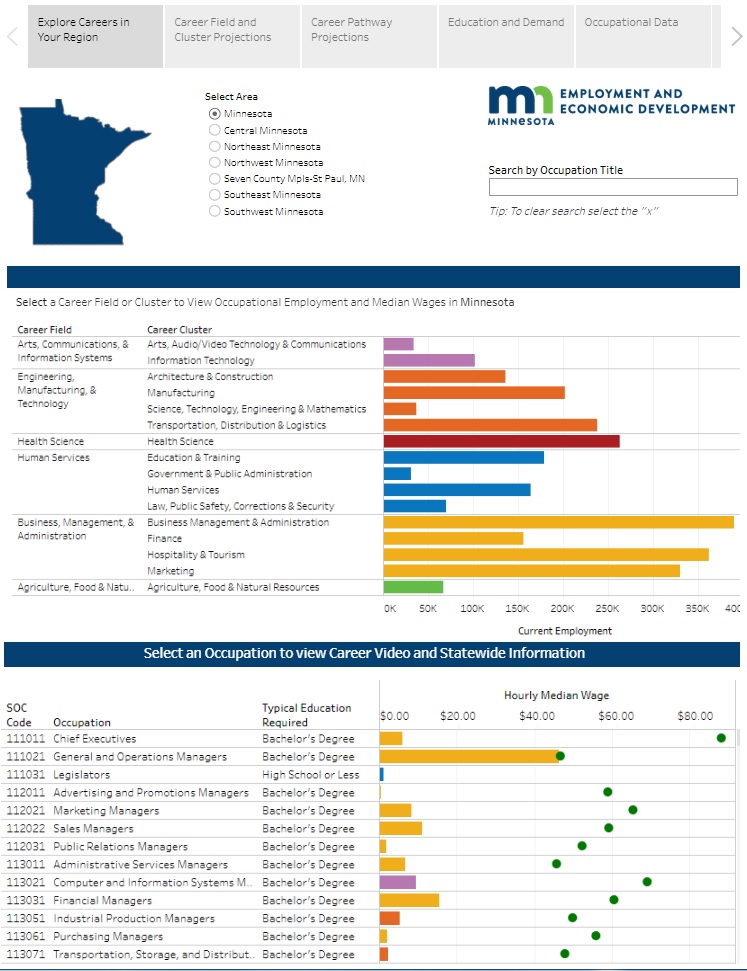
by Luke Greiner
September 2019
New dashboard provides bridge to Career Wheel to help schools and students make decisions that align with the economy.
Local labor market information is foundational for creating and aligning educational resources at the secondary and post-secondary levels with the current and future needs of the job market.
For more than four decades, the Standard Occupational Classification (SOC) has been the standard for measuring and analyzing occupations in the United States.1 The SOC hierarchy provides researchers with an excellent model to conduct meaningful research on the economy, but it's not the only way to organize occupations. Educational institutions commonly use a different type of structure, which creates a mismatch, making it difficult to evaluate how well programs and course offerings match the job market.
Minnesota's Department of Education and Minnesota State college systems rely on a framework that connects occupations with educational programs and places them into Career Clusters and Career Pathways.2 This structure is called the Career Wheel.
In order to bridge the differences between the SOC structure and the Career Wheel structure, DEED has started connecting local labor market information to the occupations organized by the Career Cluster and Career Pathway groups in the Career Wheel. The goal of packaging labor market information in the Career Wheel format is to help our schools and students make decisions that align with the economy. Virtually every school and college in the state is familiar with this format.
Called the Career Pathways Tool, the target audience for this interactive dashboard, created by DEED's Regional Analysis & Outreach Unit is students, school districts, and colleges. It can help answer the following questions for each group:
For students:
For instance, a student interested in marketing might find it helpful to see current employment numbers and wages for detailed marketing occupations. This can include jobs in sales, merchandising, research, communications, or management. From there, students can assess occupations by how much education beyond high school they require and how much they tend to pay. And by selecting the occupational title, a new tab opens to a short video of a typical 'day in the life' of each occupation.
For education institutions and partners:
For school administrators, colleges, or even economic development organizations working to engage their business community with local education institutions, it is helpful to connect programming with the local economy. A school district or college might be surprised to learn that the business, management, and administration career field has almost five times the amount of employment that health science does in Minnesota. It could also be helpful to understand how educational requirements can be vastly different for the various occupations in each Career Cluster, or to learn what occupations are in highest demand in each Career Cluster and Career Pathway.
The goal of DEED's interactive Career Pathways Tool is to allow students, school counselors and administrators and other partners to use local occupational data to make smart decisions.
This dashboard connects educational programming with economic data in an effort to help align educational resources and planning with economic realities.
The primary goal of this dashboard is to help students understand how their educational path matches employment opportunities, and to inform education curriculum, initiatives, and programming. The first tab, "Explore Careers in Your Region" is designed primarily for career exploration with students, parents, and counselors.
The other tabs provide more detailed information for education institutions and partners to evaluate how well their programs, curriculum, and resources align with their regional economy.
